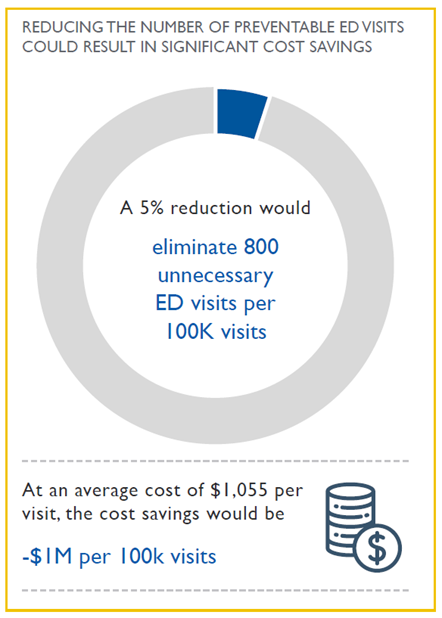

Recently we’ve discussed how the ACG System can help you analyze risk of your patient population. By using readily available EHR data, the ACG System helps providers develop risk scores, increase efficiency and provide better care. Today, we share how the ACG System can help reduce total costs, while improving the delivery of effective patient-centered care.
Providers see a wide range of cases among their patients. And often, patients present with a mixture of chronic needs and acute problems, which requires different approaches.
That’s why it’s important to understand a patient’s conditions, severity of those conditions and any present comorbidities. It’s also important to understand other factors about patients such as their past utilization of health care services, current prescriptions, their geographic location and effect on the health state, among others. Those with chronic illnesses such as diabetes or heart disease will likely have several follow-up visits. The relationship between co-occurring conditions and other factors affects patient health and contribute to how frequently they utilize care. The ACG System helps providers assess risk and health needs for all patients. The system helps prioritize the patients and ensures they receive the appropriate level and frequency of clinical care.
Innovative medical care saves lives every day, but it comes at a significant cost to both individuals and health care institutions. Patient care resources are costly, and while health organizations are primarily focused on improving outcomes for their patients, they also recognize the importance of lowering costs wherever possible. Many organizations join incentive payment programs to help reduce costs not only among individual providers, but across the full spectrum of care.
The ACG System helps identify patients at-risk of becoming high cost and provides insight on outcomes, such as potential hospitalizations or readmissions – two high-cost events. Managing unnecessary visits, hospitalizations and readmissions is critical to cost savings. In fact, just a 5% reduction in unnecessary emergency department visits could save nearly one million dollars per year.

To learn more about how the ACG System can help you proactively manage health needs and reduce the total cost of care, download our e-guide: Using EHR Data for Risk Stratification Analysis. In it, you’ll learn seven different ways you can start making your EHR data work for you.
You can also learn more by visiting our website hopkinsacg.org or emailing acginfo@jh.edu. If you are an existing ACG customer, reach out to your account manager.
Follow Us